 Camrivox are claiming to be the first company to integrate Google’s Gtalk into hardware-based VoIP products, making them the first device that supports Google Talk without a PC.
Camrivox are claiming to be the first company to integrate Google’s Gtalk into hardware-based VoIP products, making them the first device that supports Google Talk without a PC.
The equipment lets you setup to work with both a SIP account, as you’d expect, and a GTalk account at the same time. These features are across the whole range of Terminal Adaptors as well as their new handset, the Flexor 500 IP phone.
Commenting on the difference between Skype and GTalk, he points out that GTalk publish their information, a world away from the closed approach of Skype.
The big advantage of the Camrivox approach is to make their kit zero-configuration at the users end. The whole thing can be setup and changed simply by the operator or can be carried out by Camrivox on their behalf.
They have two TA’s, the 151 (pictured) which has support for both phone line (PSTN) and Ethernet (VoIP), letting the user chose between the ‘traditional’ phone line and VoIP. The 201 only supports VoIP.
 Analysis
Analysis
The GTalk inclusion is an interesting move for Camrivox. The world of VoIP is becoming increasingly crowded, so having your company’s voice heard (no pun intended), is also difficult. By implementing the GTalk support Camrivox is clearly hoping to hitch a ride on the Google coat tails and with the good looking kit that they have, it’s likely to catch peoples eyes.
GTalk hasn’t really set the VoIP world alight, with the clear current winner being Skype. That’s not to say that GTalk isn’t important, or that it won’t achieve a more significant position. The biggest winner GTalk has got is its integration into other Google products, such as its inclusion in GMail. Also as more people sign up for Google services they’ll automatically be signed up for GTalk.
Camrivox appear keen on integration with other products too, given they have just announced a deal with SalesForce.com. The integration will bring up callers information up when a VoIP call comes in via their kit.
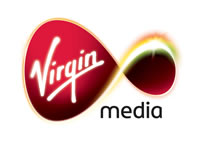 ntl are to re-brand as Virgin Media during the first quarter of 2007.
ntl are to re-brand as Virgin Media during the first quarter of 2007. New figures from the UK payments association Apacs reveal that online bank fraud losses rose a whopping 55% to £22.5m in the first six months of 2006.
New figures from the UK payments association Apacs reveal that online bank fraud losses rose a whopping 55% to £22.5m in the first six months of 2006. Another 44% were also guilty of letting the cards out of their sight when paying bills is places like restaurants and bars, with more than half of all online shoppers (51%) never bothering to check that they’re using a secure website address starting with “https” before buying online.
Another 44% were also guilty of letting the cards out of their sight when paying bills is places like restaurants and bars, with more than half of all online shoppers (51%) never bothering to check that they’re using a secure website address starting with “https” before buying online. [From
[From  Check Point, the makers of the top-notch internet security software ZoneAlarm, have announced that they’ll be moving into the hardware market with the release of a new, high-spec, wireless router.
Check Point, the makers of the top-notch internet security software ZoneAlarm, have announced that they’ll be moving into the hardware market with the release of a new, high-spec, wireless router.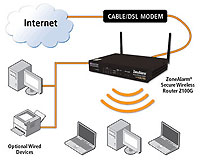 The new router incorporates ZoneAlarm’s stateful packet inspection (SPI) firewall technology, and an intrusion detection and prevention system that actively monitors network traffic to block out hackers and worms.
The new router incorporates ZoneAlarm’s stateful packet inspection (SPI) firewall technology, and an intrusion detection and prevention system that actively monitors network traffic to block out hackers and worms. Nvidia are extending their expertise in providing the chippery for portable devices by buying PortalPlayer, who are responsible for the controlling chips for the hard-disk-based iPods, or “powers some of the world’s most recognizable portable digital music players,” as they chose to describe it.
Nvidia are extending their expertise in providing the chippery for portable devices by buying PortalPlayer, who are responsible for the controlling chips for the hard-disk-based iPods, or “powers some of the world’s most recognizable portable digital music players,” as they chose to describe it. Time Magazine has stepped up to the awards podium, opened the little brown envelope and named the video sharing Web site YouTube as its “Invention of the Year.”
Time Magazine has stepped up to the awards podium, opened the little brown envelope and named the video sharing Web site YouTube as its “Invention of the Year.”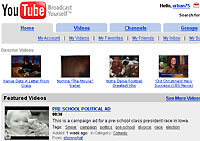 Clearly in a mood for waxing lyrical, the Time’s Lev Grossman was ready to add his own insights: “YouTube had tapped into something that appears on no business plan – the lonely, pressurised, pent-up video subconscious of America.”
Clearly in a mood for waxing lyrical, the Time’s Lev Grossman was ready to add his own insights: “YouTube had tapped into something that appears on no business plan – the lonely, pressurised, pent-up video subconscious of America.”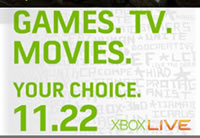 Starting 22 November, US Xbox 360 owners will be able to download TV programmes and films to their Xboxes to rent and watch.
Starting 22 November, US Xbox 360 owners will be able to download TV programmes and films to their Xboxes to rent and watch. No definite European plans as yet, but it’s expected once they sign the content deals.
No definite European plans as yet, but it’s expected once they sign the content deals.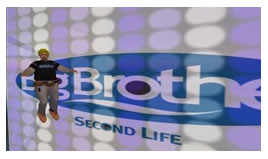 Reality TV programme, Big Brother, is moving to Second Life on 1 December, or “First virtual piglet Brother” as the BabelFish translator put it.
Reality TV programme, Big Brother, is moving to Second Life on 1 December, or “First virtual piglet Brother” as the BabelFish translator put it. How do you temp a Second Life player to take part when they’re likely to not like, or possibly hate TV? Give them something they’d love … a tropical island in Second Life. Reuters report the value of it being worth about US$1,675 (£883).
How do you temp a Second Life player to take part when they’re likely to not like, or possibly hate TV? Give them something they’d love … a tropical island in Second Life. Reuters report the value of it being worth about US$1,675 (£883). A new survey has revealed that UK consumers are way down with streaming and downloading audio-visual content into their living room, but they’re not so keen on paying for the stuff.
A new survey has revealed that UK consumers are way down with streaming and downloading audio-visual content into their living room, but they’re not so keen on paying for the stuff.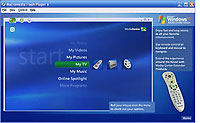 The report found that half of those questioned weren’t prepared to pay a single Goddamn bean extra for streamed/downloaded content, with a further 18% only willing to cough up £2 per month for content, and 22% only happy to pay between £2 and £5.
The report found that half of those questioned weren’t prepared to pay a single Goddamn bean extra for streamed/downloaded content, with a further 18% only willing to cough up £2 per month for content, and 22% only happy to pay between £2 and £5. According to Olswang’s research, easily-distracted, multi-tasking consumers are paying less attention to watching programmes, with 46% of respondents busy emailing and 43% web surfing while watching television.
According to Olswang’s research, easily-distracted, multi-tasking consumers are paying less attention to watching programmes, with 46% of respondents busy emailing and 43% web surfing while watching television.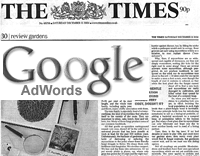 Google is set to announce a new advertising partnership with over 50 American newspapers, in an initiative designed to create an online marketplace to help Ye Olde Printe Media sell advertising electronically.
Google is set to announce a new advertising partnership with over 50 American newspapers, in an initiative designed to create an online marketplace to help Ye Olde Printe Media sell advertising electronically. Launching as an early “alpha” trial, Google has said that it won’t initially charge for hosting the service, but expects to levy a ‘relatively modest commission’ if it takes off.
Launching as an early “alpha” trial, Google has said that it won’t initially charge for hosting the service, but expects to levy a ‘relatively modest commission’ if it takes off. Google’s turbo-charged revenue increases (up 70 per cent in the third quarter) continue to give traditional media outlets the heebie-jeebies, as advertising revenues continue to crash in tabloid and regional titles across the UK.
Google’s turbo-charged revenue increases (up 70 per cent in the third quarter) continue to give traditional media outlets the heebie-jeebies, as advertising revenues continue to crash in tabloid and regional titles across the UK.